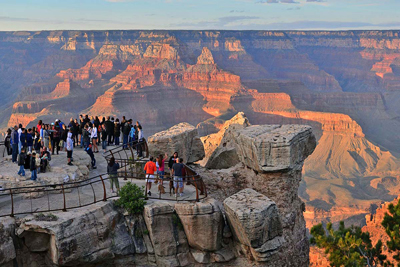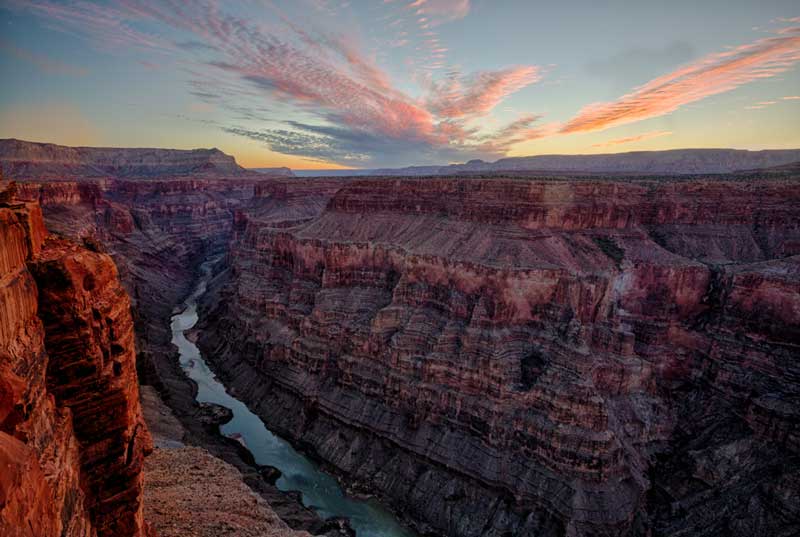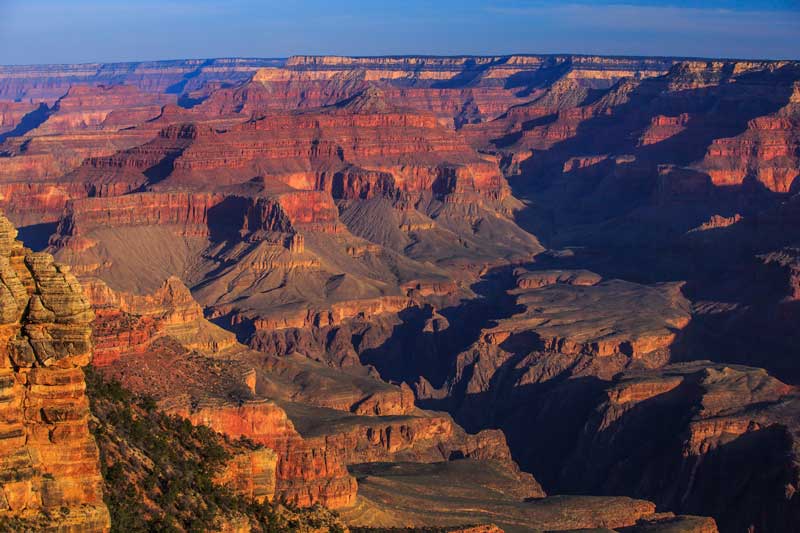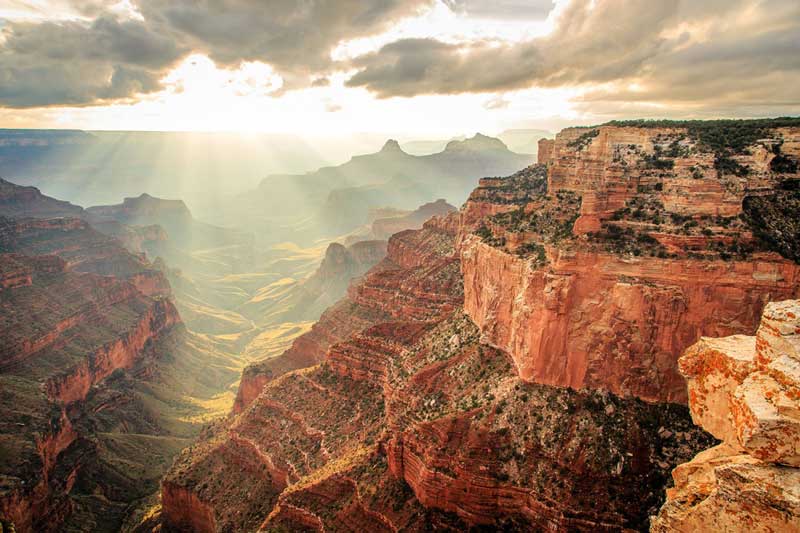
Grand Canyon National Park, a vast scenic area of northwestern Arizona in the United States of America, features a massive part of the colossal Grand Canyon, a gorge of the Colorado River, considered one of the Wonders of the World. Created in 1919, the area of the National Park was greatly enlarged, when the Marble Canyon national monuments, a part of the Glen Canyon National Recreation Area and also some other adjoining areas were added to it in 1975. However, although it covers a huge area of 1,902 square miles (4,927 sq km), a part of the mammoth canyon still stretches outside the boundaries of the park. The stretch of the canyon, which winds for 277 miles (446 km) from the mouth of the Paria River, near Lees Ferry, includes the smaller canyons created by tributaries that flow into the Colorado River from the varied plateaus. The long stretch of the National Park includes a broad, intricately sculptured chasm of imposing peaks, buttes, gorges and luxurious layers of colourful rock that paint the sides of the canyon walls and ravines, formed over the past six million years by the steady incision of the Colorado River.


The Grand Canyon is widest and deepest in the 56 mile (90 km) stretch, where the river bends flowing south to the west and northwest, widening up to 18 miles (29 km) and deepening around 6,000 feet (1,800 m) below the canyon rims. While the primary public areas of the park are the South and North Rims, along with the adjacent areas of the canyon, the rest of the park is extremely rugged and remote, but accessible by unpaved, back country roads and hiking trails. However, the South Rim is more accessible than the North Rim and the Grand Canyon Village, the headquarters of the park, is located not far from the South Entrance to the park, one of the most popular viewpoints.

Most visitors to the park come to the South Rim, as the highway enters the park through the South Entrance and heads eastward, leaving the park through the East Entrance. While Interstate 40 provides access to the park area from the south, US Route 89 from the north, connects Utah, Colorado and the North Rim to the South Rim. The North Rim, higher in elevation than the South Rim and centred around Bright Angel Point, is located directly across the Grand Canyon from the principal visitor areas on the South Rim.


A driving tour of 35 miles (56 km)) along the South Rim, arranged by the park authority, is split into two segments. The eight miles (13 km) western drive to Hermit's Point includes the Mohave Point, Hopi Point and the Powell Memorial, while the eastern portion to Desert View, comprising 25 miles (40 km), is open to private vehicles. The official walking tours include the Rim Trail, running west for about eight miles (13 km) of paved road from the Pipe Creek viewpoint, followed by seven miles (11 km) of unpaved hiking trails to Hermit's Rest. Many visitors prefer mule pack trips to ride down into the canyon and enjoy riding the river in rafts to view the unbelievable, unnerving and unearthly beauty of the canyon, created by Mother Nature. The colours of the canyon change throughout the day as the sunlight falls on the walls of the canyon from different angles. In addition to that, the colours also change with the change of seasons, especially during the winter months, by adding extra charm with snow-capped ridges and rock formations to the already stunning landscapes.

Apart from the 65-mile (100 km) scenic railway trip from Williams northward to the South Rim, several Visitors also take helicopter or small-plane flights over the canyon. However, followed by an unfortunate crash in the 1990s, scenic flights have since been prohibited to fly within 1,500 feet (460 m) of the rim of the Grand Canyon National Park. But flights within the canyon are still available outside of park boundaries.


With its enormous size, surreal colourful rock walls and awe-inspiring depth, the Grand Canyon draws millions of visitors every year from around the globe and was designated a World Heritage Site by UNESCO in 1979. It was also honoured with its own coin in 2010, under the America the Beautiful Quarters programme and celebrated its 100th anniversary on 26 February 2019